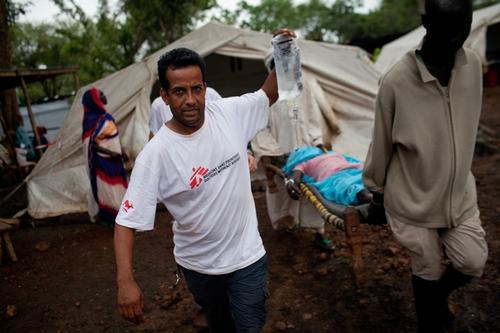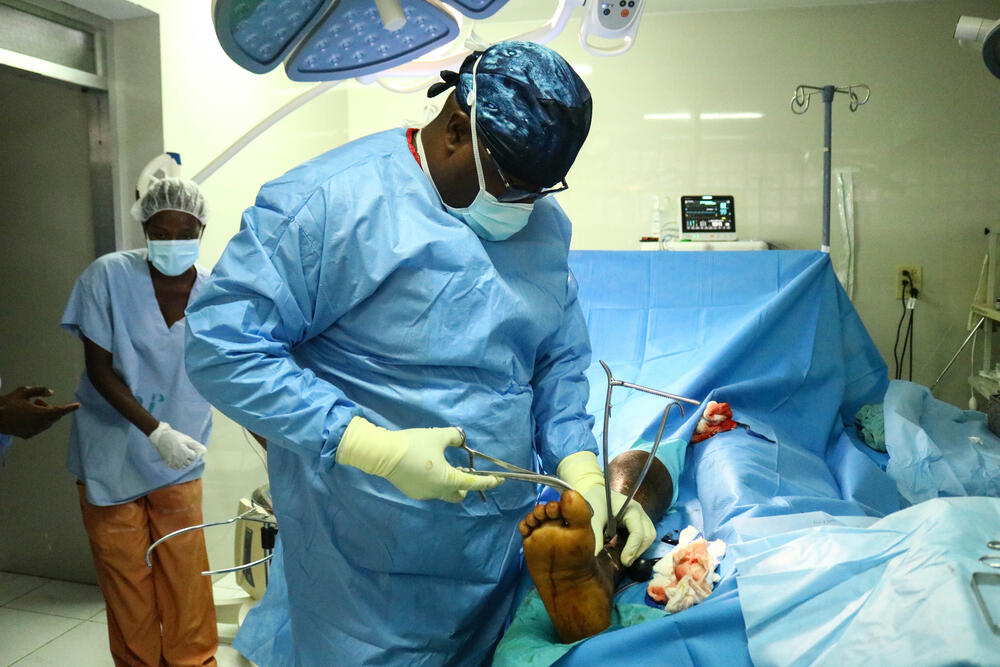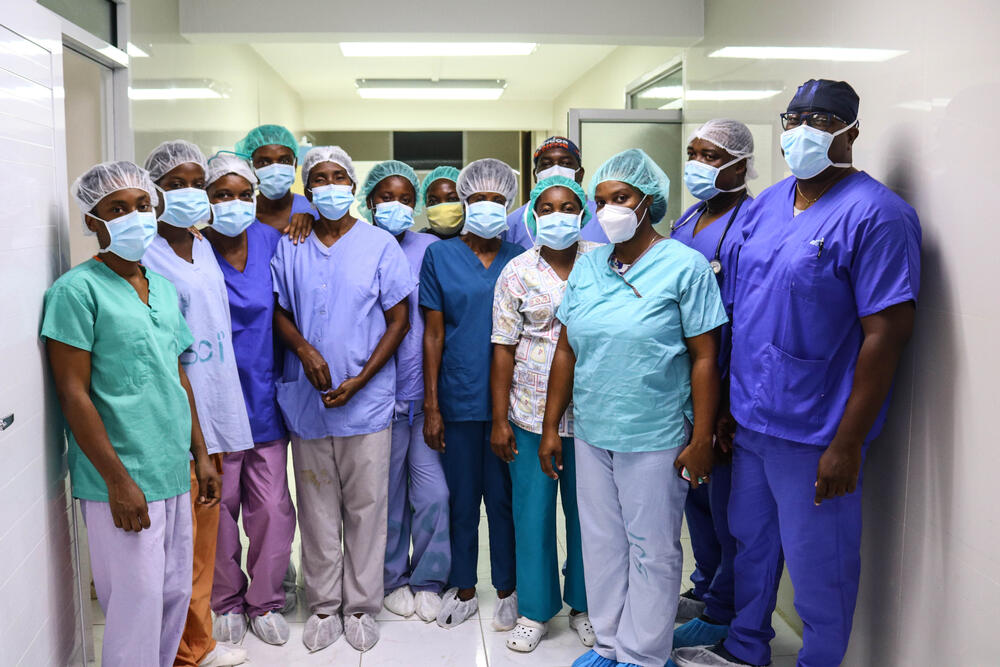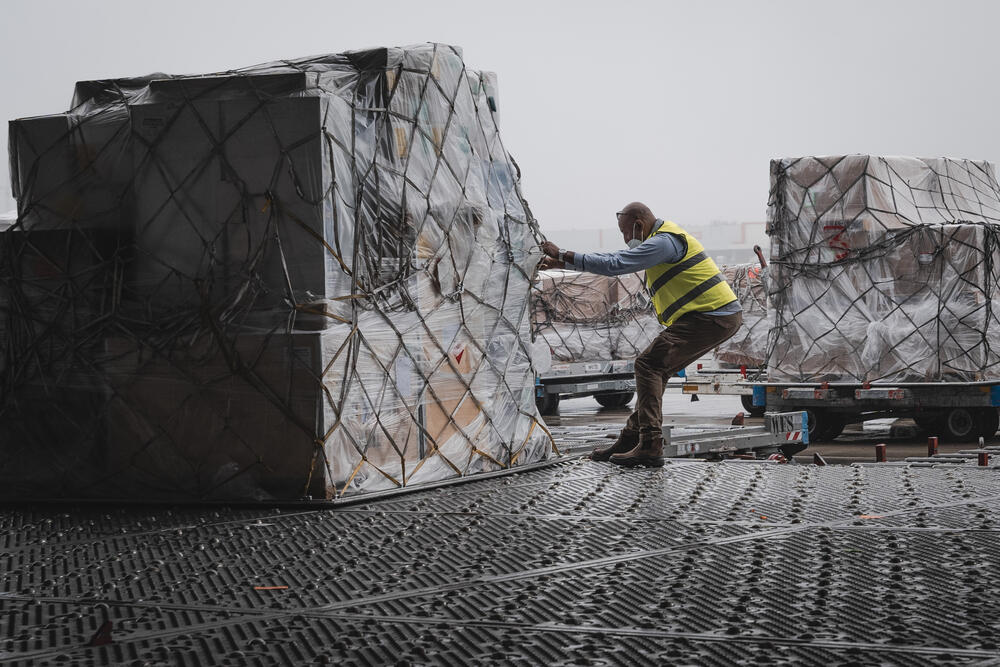Haiti: The MSF surgical team working non-stop after the earthquake
On Saturday 14 August a magnitude 7.2 earthquake struck the southern region of Haiti. MSF teams began caring for the injured within hours.
As of 24 August, more than 2,200 people are thought to have been killed with more than 12,000 injured.
Xavier Kernizan is an orthopaedic surgeon who usually works at Médecins Sans Frontières/Doctors Without Borders' (MSF) Tabarre hospital in Port-au-Prince. Since the earthquake, he has been working with an MSF surgical team that has been treating people for injuries around the clock in the town of Jérémie.
Haiti earthquake latest updates
Xavier's account
“I was returning home from MSF's Tabarre hospital and I felt the shaking on the road. At first, I didn't think it was a very powerful earthquake. It was afterwards that I started to receive photos and images of what happened.
I saw an informal discussion in an MSF chat group that we could send a team, and I told our medical activity manager that if MSF needed an orthopaedic surgeon I was available, and he said we would leave at 2 pm.
Everything was ready then and we left on the road for Les Cayes. The most stressful point was to pass through the Martissant neighbourhood to reach the road to the southern region affected by the earthquake.
"It brought me back to the earthquake in 2010 because it was practically the same kind of destruction – houses completely collapsed, rubble in the streets"
There are armed clashes in the area, and we heard worrying reports that raised our stress – for our safety and not because of the earthquake.
Roads blocked by landslides
The first place we arrived was the town of Les Cayes. It was shocking. It brought me back to the earthquake in 2010, because it was practically the same kind of destruction – houses completely collapsed, rubble in the streets.
There were places where we could not pass at all, where we had to find another way. We spent our first night in Les Cayes, before moving on; a colleague of ours was already supporting the operating theatre at the hospital there.
The next morning we left for Jérémie. Before we reached the Riviere Glace, we saw that the road was blocked by a landslide.
We already knew that the road was blocked, but no one could tell us whether a car could squeeze through the rocks there.
We exited the vehicle and took photos of how rocks blocked the road for at least a kilometre. Then we had a little scare because we were close to the cliff – there was an aftershock, and a few stones fell.
We turned back to Les Cayes, and finally we took a helicopter to reach Jérémie.
Working till midnight
The first difficulty we had was to make contact, to know who we should see, because no one knew who we were and what we were here to do. It took a day and a half before we could really work.

Help us prepare for the next emergency
The personnel at Saint Antoine Hospital did extraordinary work with the few staff and resources they had. Many patients already had their wounds debrided when we arrived.
Some had external fixators to set broken bones, and some patients had already been referred to Port-au-Prince by air. A number of doctors who were originally from this region also returned from their jobs elsewhere to support the hospital.
So when we arrived, we asked, "What can we do for you?" We picked up where they started. And so we operated on many patients.
Sunday we had four patients, Monday we had nine patients, then 10 to 12 patients per day. Generally, we left the hospital between 11 pm and midnight in order to see the maximum number of patients. So, we are shrinking the pool of patients waiting for treatment, waiting for surgery.
We are now starting follow-ups. The majority of our patients are now people we have already seen, coming back for a debridement, a new surgery or a cast. But there are still people from the backcountry, where there is no help, who are coming to Jérémie for emergency care.”
As of 20 August, the MSF surgical team in Jérémie has treated 54 people for injuries suffered in the 14 August earthquake, such as bone fractures. Thirty-six of these patients underwent surgery, while others received casts or splints.
MSF also provides surgical care at its Tabarre hospital in Port-au-Prince; so far, more than 45 people have been admitted there with injuries from the earthquake, in addition to people treated in the emergency room and discharged or referred elsewhere.
Haiti earthquake updates
On Saturday 14 August at 8:30 am local time, a magnitude 7.2 earthquake struck the southern region of Haiti. MSF teams began caring for the injured within hours. As of 24 August, more than 2,200 people have been killed and 12,000 injured.
Get the latest on MSF's response by following the link below.



